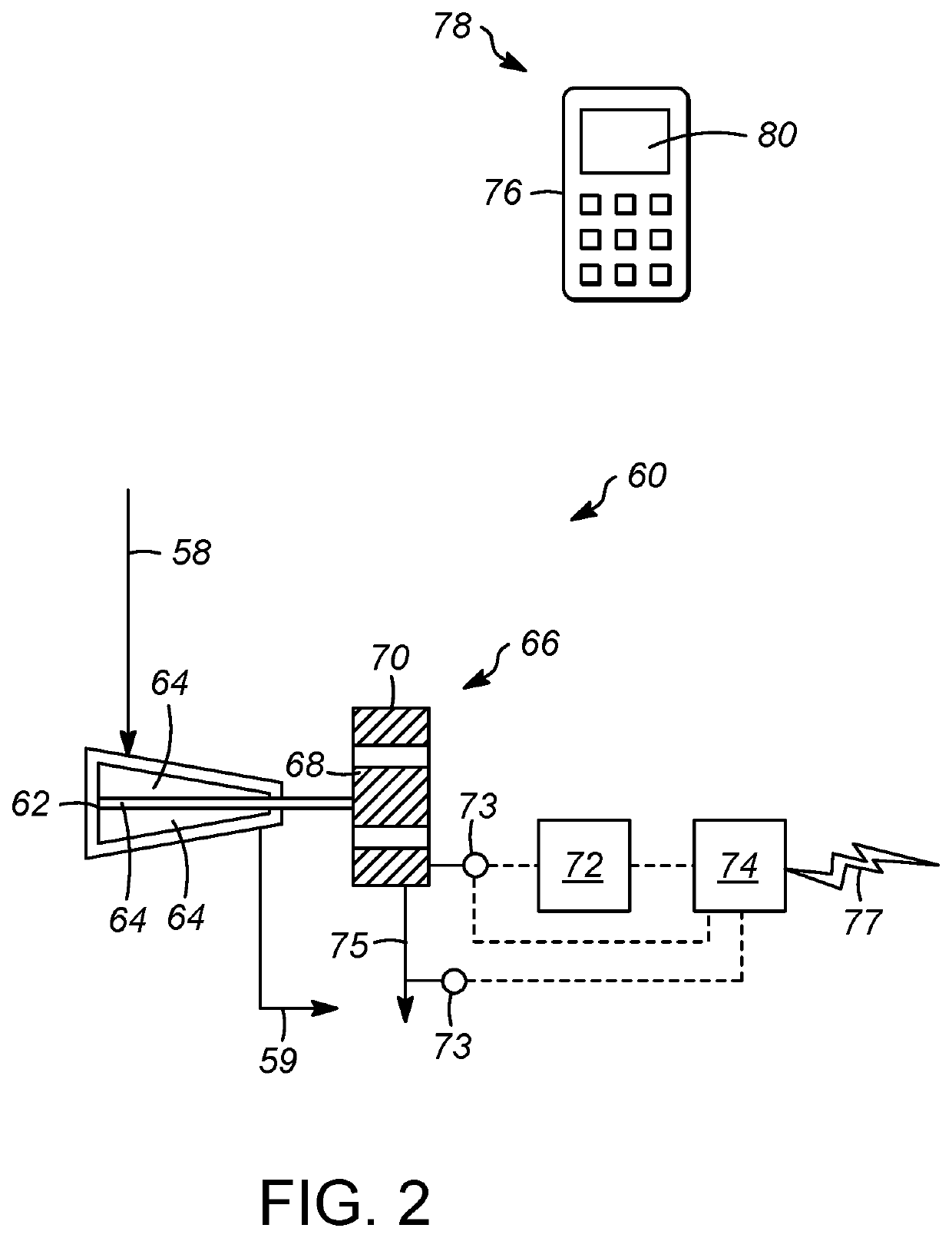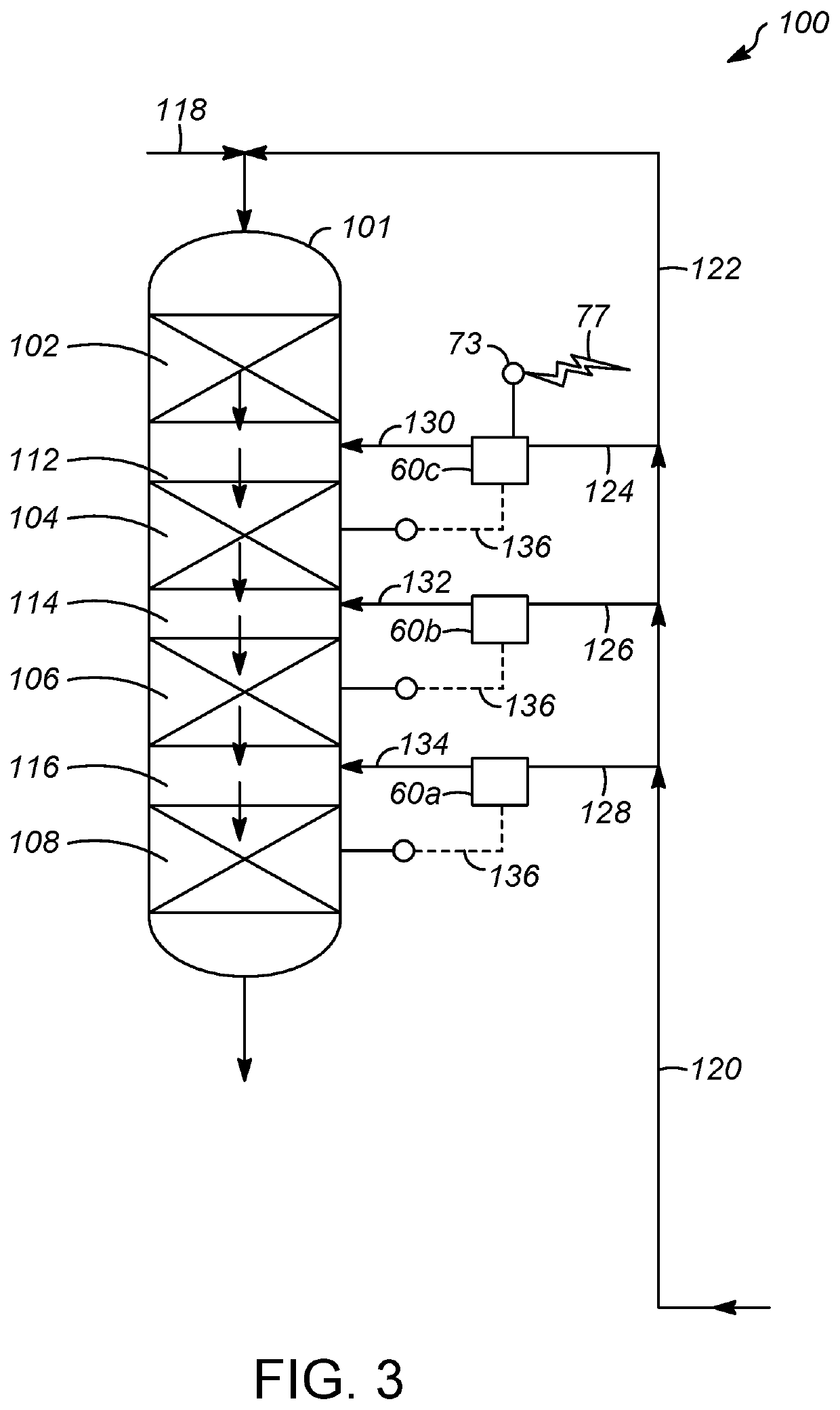System for power recovery from quench and dilution vapor streams
a technology of vapor stream and power recovery system, which is applied in the field of vapor streams, can solve the problems of limited hot catalyst flow, limited hot catalyst circulation rate, and low temperature of diluent or quench vapor stream, and achieve the effects of increasing catalyst circulation, reducing riser heat input, and increasing catalyst circulation
- Summary
- Abstract
- Description
- Claims
- Application Information
AI Technical Summary
Benefits of technology
Problems solved by technology
Method used
Image
Examples
examples
[0077]In simulated examples of the present invention, it was determined that by using a turbine 60 instead of a control valve, the quench temperature for a hydroprocessing reactor could be reduced by 5-10° C. It is believed that this could reduce the hydrogen demand requirements for the quench stream by up to 5% or alternatively debottleneck the hydrocarbon feed rate by a similar amount. Another option would be to use this reduction in the quench hydrogen demand to shift hydrogen to the reactor inlet. Additionally, or alternatively, the reduction in the quench hydrogen demand reduces the power consumption of the recycle gas compressor used in association the hydrogen containing gas stream. For an FCC unit, it was determined that by using a turbine 60 instead of a control valve, the catalyst to oil (feedstock) ratio could be increased with an increase in yield (as opposed to increase in undesired byproducts) which increases the profitability of the FCC unit or allow for more feed whi...
specific embodiments
[0085]While the following is described in conjunction with specific embodiments, it will be understood that this description is intended to illustrate and not limit the scope of the preceding description and the appended claims.
[0086]A first embodiment of the invention is a recovered electric power measuring system comprising (a) at least one processor; (b) at least one memory storing computer-executable instructions; and (c) at least one receiver configured to receive data from a sensor on an electrical powerline connected to an electrical generator which is connected to a turbine, the turbine in fluid communication with a vapor stream wherein the turbine reduces the pressure of the vapor stream and the resulting lower pressure vapor stream reduces a partial pressure of a hydrocarbon vapor or is injected into a reactor to reduce a temperature in the reactor. An embodiment of the invention is one, any or all of prior embodiments in this paragraph up through the first embodiment in t...
PUM
| Property | Measurement | Unit |
|---|---|---|
| residence time | aaaaa | aaaaa |
| residence time | aaaaa | aaaaa |
| density | aaaaa | aaaaa |
Abstract
Description
Claims
Application Information
 Login to View More
Login to View More - R&D
- Intellectual Property
- Life Sciences
- Materials
- Tech Scout
- Unparalleled Data Quality
- Higher Quality Content
- 60% Fewer Hallucinations
Browse by: Latest US Patents, China's latest patents, Technical Efficacy Thesaurus, Application Domain, Technology Topic, Popular Technical Reports.
© 2025 PatSnap. All rights reserved.Legal|Privacy policy|Modern Slavery Act Transparency Statement|Sitemap|About US| Contact US: help@patsnap.com



